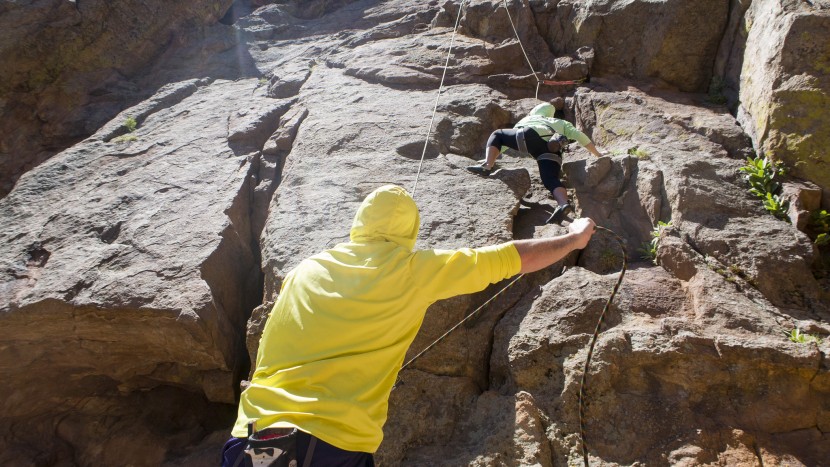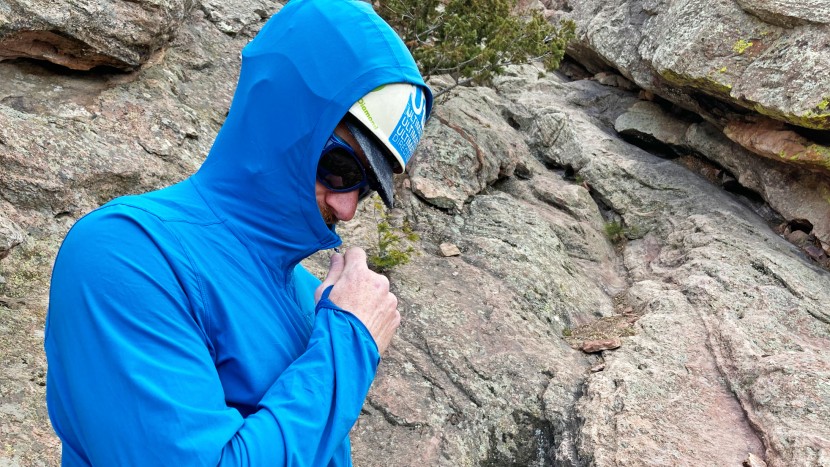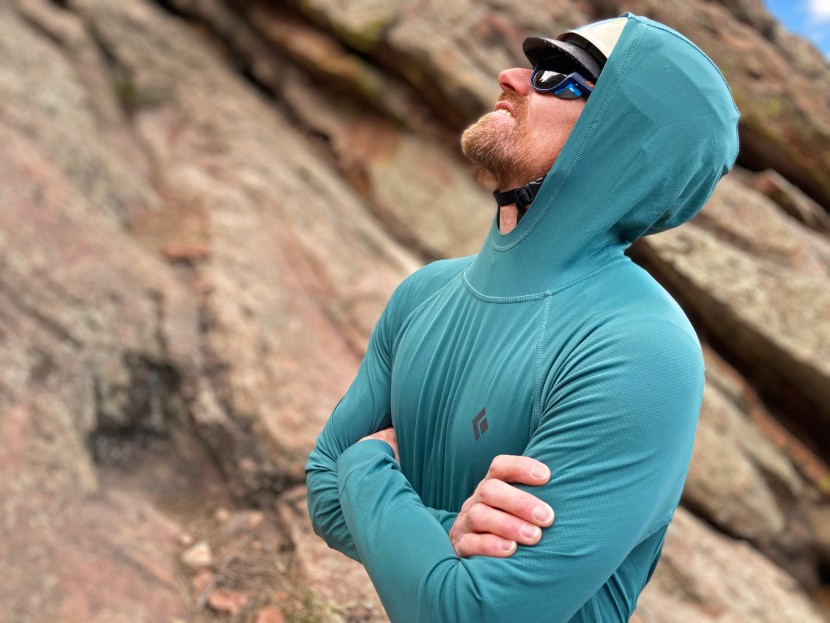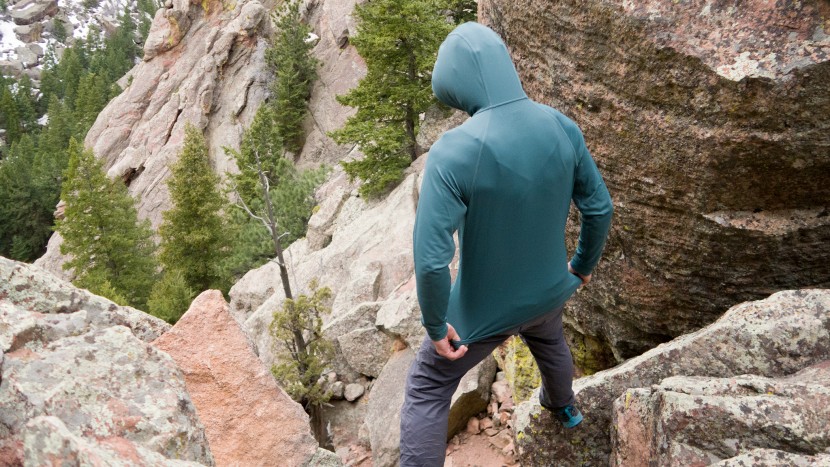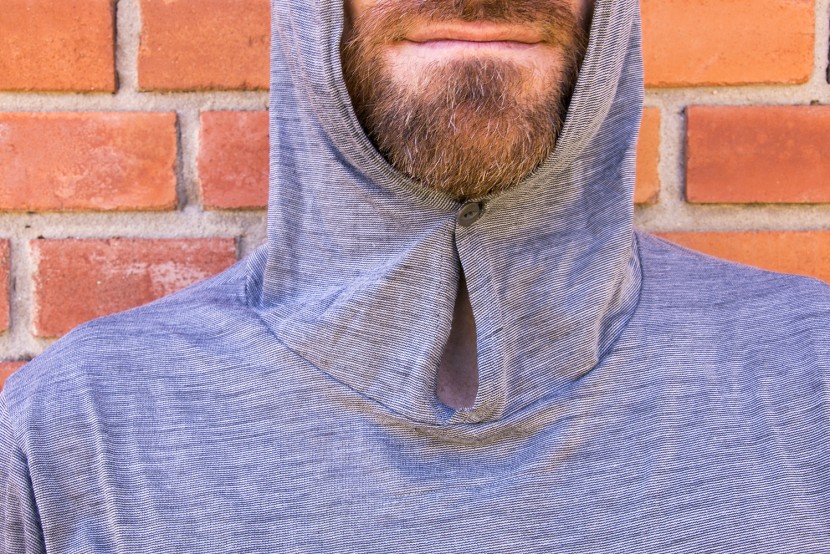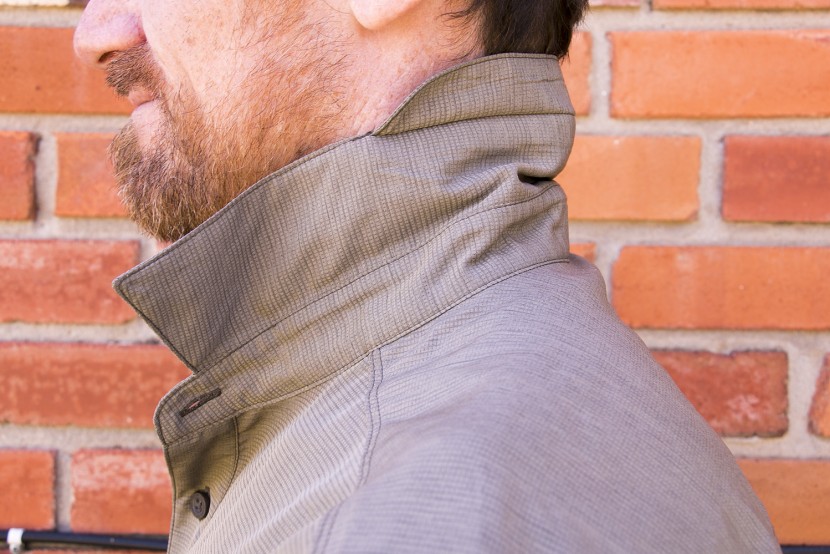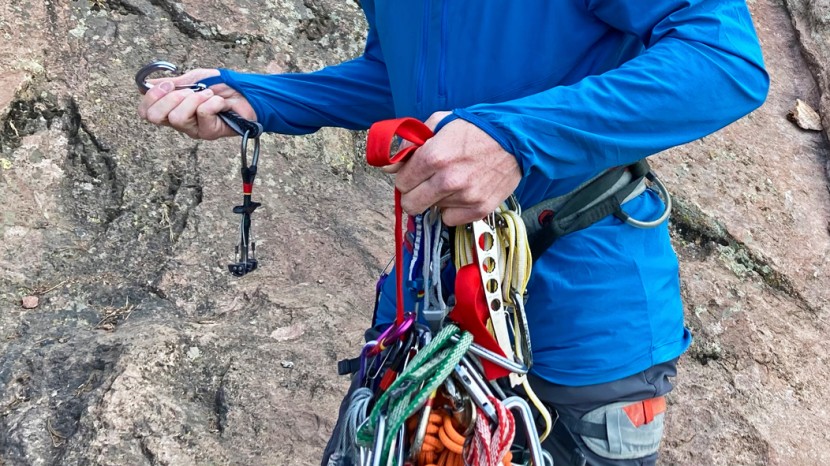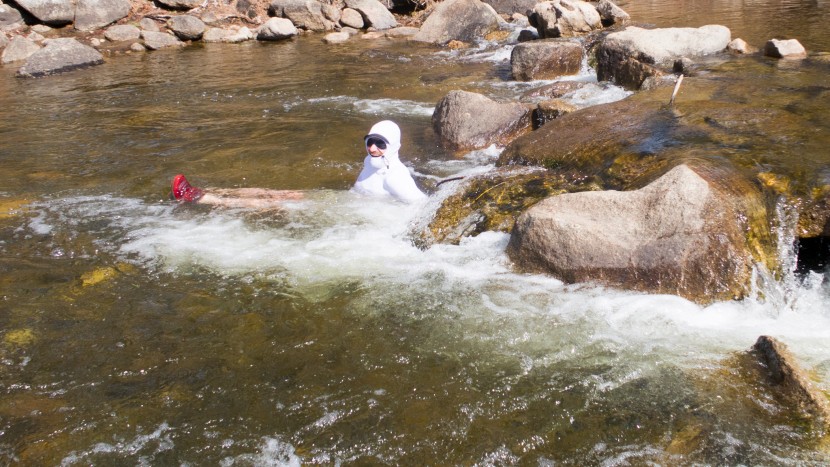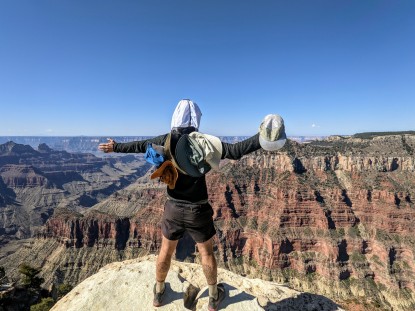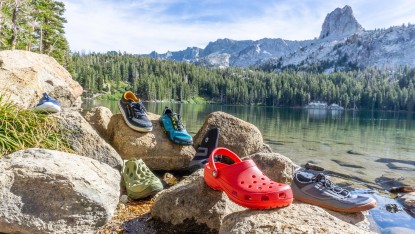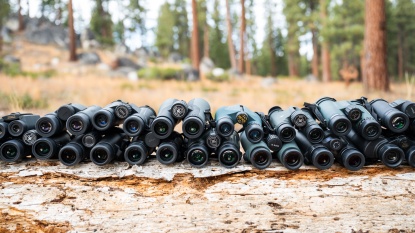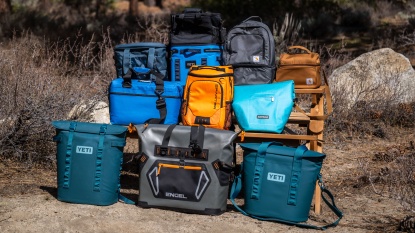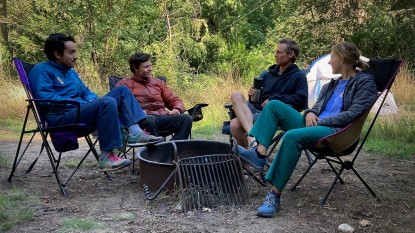Sun shirts may be the most practical piece of gear you can buy. The idea of a special piece of clothing to be worn in the sun could sound a little dubious to some though. Isn't sunscreen effective? Doesn't my current clothing protect me well enough? Are sun shirts just one more way gear companies are tricking me into buying gear I don't actually need? Why do they look so… unfashionable? And are they all like that?
Sun Overexposure
Overexposure to the sun is an actual health issue that we, as sun-loving outdoor adventurers, are no doubt vulnerable to, and we should all collectively get serious about preventing. According to the Skin Cancer Institute, 1 in 5 Americans will develop skin cancer by the age of 70; more than two people die of skin cancer in the U.S. every hour. Even if cancer doesn't develop, overexposure to the sun can cause premature aging of the skin — leathery skin and wrinkles. If you can easily prevent overexposure to the sun, do it!
Related: Best Sun Protection Shirts
A Word or Two on Sunscreen
One strategy is to use sunscreen. Our main sun shirt tester and lover of all things high alpine (and high exposure to UV) uses sunscreen as a religion, being a fair-skinned, red-headed half-Viking, who also tragically lost a parent to skin cancer. Sunscreen isn't the only option, though, and may not be the absolute best when used alone. We invite you to consider changing your fundamental attitude of how sunscreen fits into your own strategy to prevent sun overexposure.
Contemporary invisible sunscreen creams and sprays are fairly recent, mid-20th Century inventions. Before that, creams were available, but they physically blocked exposure of the sun on the skin just like a garment would. Visualize thick, white, titanium dioxide cream you would apply, perhaps with an additional greasy ingredient to make them “waterproof” (yuck!). Imagine the nose of a 60's surfer dude or a famed Himalayan mountaineer slathered with some pinkish goo.
More modern invisible sunscreens have recently come under closer scrutiny, as the chemical makeup of these products contains increasingly difficult-to-even-pronounce chemical compounds and/or are composed of microparticles of titanium dioxide. These ingredients don't simply sit on the surface of the skin to block UV; they also get absorbed through the skin (the body's largest organ), as well as released into the immediate environment. Some places, notably Hawaii, have banned certain types of sunscreens to protect marine habitats. The science is still out on just what long-term exposure to these chemicals has on our body and the environment. Because of these concerns, we see sunscreen as more of a supplement to our primary way to protect ourselves from the sun: specifically designed sun clothing.
Why Sun Shirts?
If your interest is piqued on the idea of sun shirts, you may wonder now why a specialized piece of clothing is needed and why your current clothing may not do as good of a job. Sun shirts are made of materials that naturally block more sun from reaching your skin than a normal shirt. This is measured/compared using the UPF (Ultraviolet Protection Factor) rating. The higher the rating, the more UV sun protection the fabric will give you.
As an example, a simple cotton shirt has a UPF rating of around 5, meaning that 1 out of 5 units of UV will reach your skin (20%) while wearing the shirt. The lowest UPF rated sun shirt we've tested has a UPF of 30, meaning only 1 out of 30, or 3% of UV units reach your skin — an almost 7-fold increase of protection.
What's the Difference?
Sun shirts protect better from UV than normal shirts. But normal shirts seemed to have been historically good enough before, so why is more protection needed now? Funnily, it's because what's “normal” in a shirt has changed. A contemporary bleached white cotton shirt has a far lower UPF rating than an unbleached cotton shirt from 100 years ago. The shirt will now be made of a looser weave, be made of thinner fabric, and the bleaching process fundamentally changes the properties of the fabric in regards to sun protection. Regular fabric material just doesn't cut it anymore.
Think of a professional baseball player — they're out in the sun in a stadium that seems to reflect the sun's energy like a solar oven. Baseball games are long, too; there's a lot of standing around. What does their uniform look like? It looks like what they wore 100 years ago: all covered up in relatively thick, loosely fitting fabric with a long-brimmed hat — absolutely perfect for the job.
Now think of a professional basketball player — what are they wearing? Sleeveless shirts and shorts made of a fabric with a loose weave. Basketball players are sprinting from one end of the court to the other, but exposure to the sun isn't a problem; they play indoors. They need to dump heat constantly. If the Dodgers switched uniforms with the Lakers and tried to play their respective games, there would be chaos on both teams: the baseball players would fry to a crisp at a July double-header, and the basketball players would die of heat exhaustion before the second quarter. Fit and fabric make a difference when it comes to exposure to the sun and breathability.
Advantages of Sun Shirts
We're not against sunscreen, but there are certainly some advantages to using a sun shirt as the primary way you protect yourself from sun overexposure. Consider that a shirt usually doesn't easily wear off or need re-application every few hours. They're really hard to forget to put on when going out for the day. A sun shirt doesn't usually run out unexpectedly, and the application doesn't take too much more effort compared to a normal shirt. It's also easy to know if it's working — is it covering your skin? Great, it's working! Wherever a sun shirt isn't covering, that's where you want to supplement with sunscreen.
What Makes It a Sun Shirt?
The sun shirts we've tested and reviewed have three important properties they usually all share: they're made of some sort of high-rated UPF fabric like polyester, they have fabric that's spun with a tight weave, and the fabric may be thicker. Thicker fabric enhances how penetrative UV light is. Thickness also affects how durable the fabric is.
Sun shirts also play with the cut and design of the shirts themselves. Almost all of the sun shirts we've tested and reviewed fall in one of two categories: more traditional, button-up shirts that are loosely fitted and made up of less stretchy material; and lighter, stretchier pullover hooded shirts without any real buttons or accessories at all, except maybe holes near the cuffs to stick your thumbs in. Which one is perfect for you?
Activity Intensity
One big factor you should consider is the intensity level of whatever activity you plan to do. Higher intensity activities: fast hiking, trail running, and bikepacking, for example, may have a higher intensity than other activities where you may be standing around a lot longer. Lower intensity activities including fishing, bird watching, and boating of all kinds.
For those high-intensity activities, consider first a hooded pullover sun shirt. Such shirts are cut relatively looser than a regular shirt you own, helping you to keep covered from your waist to beyond your wrists, as well as covering your head with a hood.
These sun shirts typically don't have a whole lot of features, allowing the (usually) lighter fabric the freedom to move with your body while also not snagging on anything that you may be walking through. Their lightweight and packability are key features, but as a whole, they're not made to be durable like a button-up.
For lower intensity, all-day activities, consider a more traditional button-up shirt. These shirts will also feature more relaxed cuts relative to normal clothing but will appear more like a regular shirt and with it, all the accouterments like collars, buttons, pockets, zips, etc.
For maximum sun protection, you'll most likely need to pair these button-up shirts with a big floppy hat as well, and perhaps even add a neck gaiter and sun gloves. They usually use a less stretchy fabric that's a bit thicker. Durability will generally be higher than a hooded sun shirt; they really are made to take some abuse. Some may find this traditional design a little too traditional, and we have to admit that some of the shirts we've tested are ugly ducklings in disguise.
Related: Best Sun Hats
Versatility
Finally, take into consideration how versatile you'd like your shirt to be. If one style is more attractive to you than another, are you interested in using it for multiple activities during the day? Perhaps you'll start off with a bike ride to brunch, then hit the local trails for a hike before calling it a day at the local pub 'n grub. You may want something a little more casual, with a lighter fabric and a fun, bright colorway that may not look so serious — it's just hanging out with friends, after all.
Or maybe your shirt needs to be able to endure a transatlantic flight to the base of Kilimanjaro, and seven days of hiking to the summit, then going on a safari right afterward. Before you know it, you're being whisked away back to the States. We'd then consider a more durable shirt with some pockets to keep a camera in and maybe a passport too.
Perhaps you need something dedicated only to the beach, the waves, and the water. Once you're back on the other side of the boardwalk, you'll be changing into something else entirely. But while in the water, you need a shirt that swims.
If versatility isn't really an issue that's important to you, that's fine too. You can always grab more than one sun shirt to round out your personal wardrobe. We've got a few ourselves.
Conclusion
Sun shirts are a great example of a topic you may have never considered before, but once the idea clicks, they all of a sudden become your most important, clutch piece of gear. It happened to our own main tester: while sitting with a bunch of backpacking guides eating dinner at a lodge just outside of Sequoia & Kings Canyon National Park, a senior guide couldn't stop raving about how they had fallen in love with their new hooded sun shirt. As soon as tip money was shared, our gearhead ordered the exact same hooded sun shirt as that senior guide, having just barely endured the never-ending sun-bleached granite slabs of the California high alpine mountains in nothing but a running singlet and shorts with a 3" seam length. Lessons were learned on that trip. And just like that senior guide, it became his favorite, all-day, every-day piece of gear.


